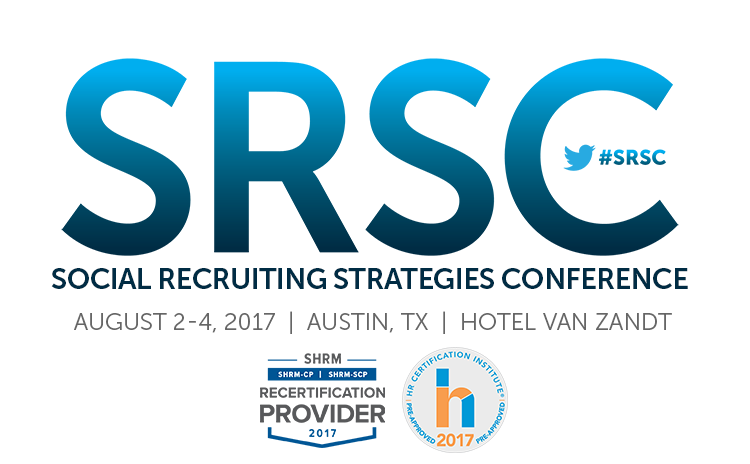How To Keep Your Candidate Outreach Emails Out Of The Spam Folder
July 31, 2017 by Natalie Severino, Best Practices, Sourcing and Recruiting, getTalent

Outreach emails that are designed to target top candidates take a lot of time and energy for recruiters to create. (At least, they should, if you want them to be effective and make the recipients feel like true VIPs!) So, it’s frustrating to think that all that good work might end up in a spam folder — never to be retrieved, opened, read, and enthusiastically replied to by the prospective candidate.
Emails end up in spam folders or get bounced for many reasons. The recipient’s mail system and security settings have a lot to do with that process, of course. Most spam filters and mail servers use a scoring method to decide which messages should be relegated to a user’s spam folder. The higher the spam score assigned to your email, the more likely your message won’t make it to the recipient’s inbox.
There are several things you can do, however, to help keep your candidate outreach emails out of the spam folder. Here are a few strategies
- When formatting outreach emails, think plain and simple.
You want your outreach emails to dazzle potential hires, of course. But if they’re HTML-heavy and bloated with images, color formatting, and other bells and whistles, spam filters will be inclined to reject them outright. Avoid DIV tags (HTML coding), which is generally good practice for emails anyway. And make sure not to leave tables empty.
Also, be careful about generating bad markups. (This often happens when copying and pasting from Microsoft Word.) Just type plain text in the compose field. Plain text works great — really. It will be less likely to send up a red flag with spam filters and will look professional to all recipients.
Additional tip: If you want to use HTML formatting, consider sending multipart/alternative emails that contain both a plain text and an HTML part. The part the recipient sees will be determined automatically by their email system or according to their selected email preferences.
- Go for short and sweet — and avoid common “triggers.”
Recruiting and sales are similar in many ways (we make this comparison often, actually). However, outreach emails to prospective candidates should never come across as salesy. Keep the salutation informal and friendly — use “Hi” or “Hello” instead of the formal letter-like “Dear [insert name].” And don’t use ALL CAPS. Not only is it rude, but it can also increase your spam score. (So can overuse of exclamation points!!!)
Subject lines should be brief — 32 characters or fewer, including spaces, is ideal, so they fit on small device screens — and straightforward. Be careful about the words you choose to include your message, especially in the subject line. Even seemingly benign words like “Success” and “Great” and “Boss” could be flagged by a spam filter. Phrases like “Apply now” and “Call now” and “Urgent” can also put your email on the short path to a spam folder. (Note: When crafting your outreach emails, take the time to do a quick search online for current lists of spam trigger words.)
- Thoroughly check links and assess URLs.
This is basic stuff, but it can prevent your emails from getting blocked and keep your spam score down.
Many spam filters will block emails that contain links to websites that lack SSL certification. Does your outreach email contain links that lead to non-secure and potentially harmful sites? Not sure? Here’s a quick tell: If the link contains “https://” that means it leads to a site with HTTPS security encryption. Without HTTPS, any data passed between a web browser and web server is insecure.
Also, make sure any hyperlinks in the email match their destination URLs. Try to give the user some context about why you want them to follow a link (i.e., don’t just use “click here”).
As for URLs: Avoid long and overly complex web addresses. Spam filters tend not to like them — or URLs with numbers in the name.
- Confirm that your domain or sending IP has a good reputation.
A bad reputation = a ticket to the spam folder. So, before sending candidate outreach emails, double-check the reputation of your domain and sending IP address using a free resource like Sender Score
- Verify the validity of your domain record.
This is another technical housekeeping item that can help prevent your outreach emails from being marked as spam. SPF records are a type of Domain Name Service (DNS) record that identify which mail servers are permitted to send email on behalf of your domain. If an SPF returns an invalid or negative result, it can impact the deliverability of email from your domain. Free online tools (like this one from mxtoolbox) are available to help you verify that your domain’s record is valid.
While there are no guarantees that your email messages to top prospective candidates won’t end up in the spam folder, the above tips can make a big difference in avoiding banishment. Also, take a moment to check out the CAN-SPAM Act. This law sets rules for sales and marketing messages, but it’s worthwhile looking at the guidance to make sure your outreach emails won’t be misconstrued by recipients as spam.
*This post was originally published on the getTalent blog on June 21, 2017

